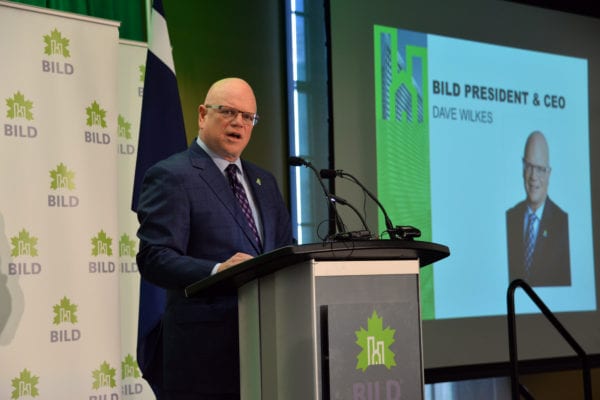
The experts weigh in on the future of the GTA’s housing market
There is no doubt that 2020 will be known as the year of Covid-19, but before the emergency measures, office closures, and distancing protocols hit the GTA, it was shaping up to be the year of real estate. By the end of February, the months of inventory for properties listed on the MLS were at their lowest levels since early 2017. The Toronto Regional Real Estate Board was predicting that total sales would exceed 100,000 sales for just the third time, the new homes and condos sector was anticipating nearly 20,000 closings by year end, and any price softening tied to mortgage stress tests or foreign buyers taxes was a distant memory. Then on March 11th, the NBA postponed its season and everything changed. Within a week, Ontario had issued a Declaration of Emergency…and we all know the rest of the story.
Of course, with so much uncertainty in the world, there are more pressing matters than the price of real estate or the number of homes sold, however there are still many questions that need to be answered. We’ve assembled some of the industry’s finest for a frank discussion on the current state of the market and where we see it going from here. Meet our panelists:

Dave Wilkes is President and CEO of BILD. With 1,500 member companies, BILD is the voice of the home building, land development and professional renovation industry in the GTA.

Winnie Chan is Vice President, Sales Management for Tridel, a leading developer and builder of condominium residences. In 2019, they were awarded Ontario Homebuilder of the Year, by the Ontario Homebuilders Association.

Ben Myers is President and owner of Bullpen Research & Consulting Inc. With over 15 years of experience, Ben is an industry expert, and a go-to source for the latest on the domestic residential housing market.

Michael Kalles is President of Harvey Kalles Real Estate Ltd., Brokerage. Over the past 25 years, Michael has built the company from $147 million in gross sales to almost $2.5 billion in 2019.
To watch the full, unedited discussion on the Harvey Kalles YouTube channel, click here.
The Collection: David, how has the construction industry changed since the start of Covid-19?
David Wilkes: The construction industry was able to continue to work, it was designated “essential” by the Provincial Government. But where I think there’s been a change in the industry is the relationship with the consumer. We didn’t use the excuse of the pandemic to not get things done. Whether that was through virtual showings of units, inspections, working with municipal partners…you’ve seen innovation to ensure that the responsibility to continue was facilitated by not looking for excuses but looking for solutions.
TC: At a BILD outlook session earlier this year, the speaker projected 2020 was going to have 20,000 closings in the high-rise sector. Is that still the case?
DW: We were having a record year. Up until mid-March, sales in both high-rise and low-rise were off the charts, exceeding the 10-year average. It was going to be historically strong. In April, the ground fell out…in terms of the number of sales…but the pricing held, which is really important to recognize. I don’t know if we’ll get to the numbers that were projected but the strength of the market has been one of the key factors throughout the pandemic.
TC: What role does the construction industry have to play in an economic recovery?
DW: Look at the GTA’s importance to the economy, both nationally and provincially. Twenty percent of the country’s GDP is a result of activity in the GTA, and 50 percent of the activity as it relates to the province. So, if you accept that the GTA will be a key driver of the recovery, I think you also have to accept construction as a key driver. The multipliers that we have within construction are some of the highest across the industrial mix. We just released a paper that had 20 recommendations on how construction activity could be stimulated, investing in things like infrastructure.

TC: Ben, the CMHC predicts a drop in average housing prices between 9 and 18 percent over the next 12 months. Understanding that these figures are Canada-wide, what does it mean for the GTA?
Ben Myers: Whenever you see a forecast by a respected and unbiased organization like CMHC, it has an impact. Part of the reason people buy homes is their expectation of future growth. If they think prices are going down, they may put off those decisions. But looking at the GTA numbers, it seems that the market is bouncing back fairly quickly. We’re seeing homes sell above asking, we’re seeing multiple offers. We’re seeing some supply come back to the market but the demand seems to be there. In terms of changes to the mortgage insurance rules, Genworth and Canada Guarantee did not follow the CMHC. So it will be interesting to see if CMHC loses some of its market share in that space.
TC: Do you anticipate any softening of prices?
BM: There’s this term being thrown around called the “deferral cliff.” A lot of lenders allowed up to six months of deferred mortgage payments, and it was a lot larger than I would have anticipated, the number of people who took advantage. But we don’t know how many people applied for those deferrals just because they were worried about losing their jobs, not that they had lost their job or were in trouble paying their mortgage. So that’s kind of the big unknown. Job losses nationally seem to be concentrated heavily in rental households versus ownership households. So it will be interesting to see, once we get to that deferral cliff, what happens. Or once we see more of these Toronto condo completions occur, if we start to see oversupply in the marketplace. But, if I was a betting man, I wouldn’t bet against the GTA market. It seems to be extremely resilient.
TC: We have seen a drop in rental prices. Is that temporary to motivate people to move during Covid?
BM: We had started to see some softness in the downtown, and I don’t think it was about demand, it was about affordability. When you start to get $5 per square foot rents at 500 square feet, that’s $2500 a month. You’re starting to get pushback. The purpose-built rental market was still seeing fairly large growth last year; areas like Scarborough were seeing 20 percent in some projects. People were having to seek out alternative areas to live because they just could not afford to live downtown. Potentially that’s a problem because there are a lot of projects going in downtown, and in some, as many as 90 percent of the units were bought by investors with the purpose of renting them. So, if we’re not seeing rent growth, that will impact investor purchases and cause supply to decline in the future. I do think part of the drop is related to Covid-19, and also by that short-term rental supply that’s coming on. But that will be a one-time infusion. After that, we’ll go back to being severely undersupplied.
TC: Winnie, how have declining rents impacted the investor market?
Winnie Chan: We represent multiple projects from different areas and different sizes. If you look back, for the last few years, we’ve moved away from just smaller units and we’re moving into ‘home sized’ condos, too. So, it’s a tale of two cities. We’re building 2000 to 4000 square foot condos, and with today’s prices, they may not draw investors. Now, for our investors, yes, many are not happy when they see there are problems with tenants, but many understand this could be short-term. When you look back to the mode of investment in the condominium, seasoned investors act fast, come at the beginning of a launch, and understand that the period of time until delivery can be anywhere from 3 to 5 plus years. So rental income is important but it’s not as important as appreciation. It’s the old saying, the difference between inflation and appreciation is ownership. Rental income is a bonus to sustain the expenses, but the main aim of the investor is appreciation because they are buying into the future.

TC: How have sales launches been affected?
WC: In 2020, Tridel had about four launches on our plate. We did launch a boutique condo in Thornhill priced from $1.2 to $6 million. The timing of the agreements of purchase and sale happened in March, so we were right in the middle of the pandemic. Of course, at these prices, the investor portion is smaller, the end user portion is larger. And what we found, the larger the home, the faster they were going, even in March. We had a very low rescission rate, and the 10-day rescission period hit into the pandemic! So we were about halfway through pre-launch activities, we did some signing, and we stopped advertising. From March through mid-April, everyone was stopping activities and watching. As far as the sales are concerned, we went down from about seven offices into one main area, where I can rotate staff. We [also] came up with some innovative plans to help split or ease up deposits for a month or two. But now everything is back to normal. As far as the other new launches, we’re waiting to see and feel the pulse before we launch.
TC: When you don’t have a crowd and the associated hype, how do you launch a condo project?
WC: This pandemic has forced all of us to embrace technology. Even my mother is on Zoom. So, builders will be doing launches in a very different way. Webinars to introduce pricing and floorplans; virtual appointments with PowerPoint; signing, fintrac-ing IDs; deposits…we can easily send a courier to a purchaser’s home. So, as far as launches, even on a bigger scale, I believe it’s very doable.
TC: Michael, how have sales strategies changed in resale?
Michael Kalles: We’ve had virtual tours for a decade but now we have 3D virtual tours, floorplans, everything is integrated. So when we went through the most difficult times, showings as an absolute last resort, we were able to showcase our listings digitally. Years after I said no one would ever buy a home through the internet, we sold a cottage for north of $4 million and we sold a house for $1.5 million in Roncesvalles….both buyers never saw the inside of the home. So digital has really taken off and many of these things are going to continue. Unfortunately, the backdrop has been incredibly difficult, what’s happening in our world, but it’s pushed us to the next level.

TC: Have you seen any evidence of price softening in the market?
MK: Since March 15th, we have not had a single delay, we have not had an abatement of a single dollar, and every single property has closed on time at the price negotiated. I’ll feature one area, Forest Hill. We had a property that came out March 19th for $5.5 million and sold for $5.4 million. We had another that sold under multiple offers on Forest Hill Road, north of $6.6 million, and we firmed up on another deal at $12.6 million on Dunvegan. I’m just outlining one area but to make sure I answer the question, during the most difficult times, a number of sellers were pricing their properties below market but the results were 10 offers, driving the price up.
TC: Do we still have a supply problem in Toronto?
DW: We had a supply problem coming into it. Until we get back to normal levels of immigration, we won’t see those extremes. I believe that the GTA is going to be one of the regions, globally, that people will want to come to, so I think we will get back to challenging times. And if we haven’t learned lessons to speed up approvals between now and then, that will be a disappointment.
TC: Are you seeing any changes in buyer behaviour, whether that’s product design, or location?
WC: Since the pandemic, we have been dealing with clients that are nearly all end users, looking for larger product. Why are they making a decision when there is so much unknown in the world? They’re thinking long-term. So pandemic or not, they are buying for the future, they’re buying a permanent, final home.
TC: In an age of social distancing, are you seeing a trend towards the suburbs?
BM: People want to live in cities, where the action is. Among the younger crowd, downtown is still where it’s at. There’s always been a desire to be in the suburbs for families, and maybe there’s been a slight uptick, but there’s just not a lot of availability. The supply of new single-family homes is dwindling to almost nothing. And, commuting in this region is only going to get worse. I don’t think we’re going to see the death of any cities.
TC: Mike, is remote working here to stay and what does that mean for the 416 vs 905?
MK: I agree with Ben, the downtown core will come out of this. But, our Muskoka office has never had a better couple of months than they’ve had recently. Three to five offers on every property, at every price range. So, I think cottage country is going to become even more popular. People are going to want a place outside the city to escape to. I also think we’re finding that you can effectively run a business remotely…there are big companies, Facebook, Shopify, saying a percentage of their workforce are going to work from home, and it’s going to be effective. But I still think there is always going to be a demand from younger audiences that want to be in the core, where the action is.

TC: Dave, what can we do to help first time buyers get engaged in the market?
DW: Our bias and preoccupation is looking at how government policies affect the marketplace. There are a number of things that can be done from lengthening amortization rates for unsecured mortgages to taking a hard look at the mortgage stress tests. Some of the new proposals that CMHC has come out with, I think are wrong and have a bias against homeownership. But I really believe it comes back to supply. We need to make sure that we are building more homes for all types of buyers, first time buyers in particular.
TC: What’s in store for Q3 and Q4 of 2020?
BM: I’m bullish by nature. I think jobs will come back, but I think it will be a slow recovery. I think our real estate market is extremely resilient and that there’s a huge amount of latent demand. There might be some short-term pain in 2020, but in 2021, you’ll see developers launching projects and investors getting back in. We’re already seeing recovery in the resale market and resale tends to lead new homes.
DW: I think we’re going to see some choppiness in the short-term, the next 12 to 18 months. When we get to a spot where some of the restrictions that we’re living under aren’t in place, I am incredibly bullish on the long-term future of the market. The GTA is recognized as one of the best regions to live in the world. We’ll be fine.
WC: We are already seeing a recovery from May and June. The clientele we are dealing with are smart enough to know that construction costs are not going to drop, lands costs are not going to drop, our governments are not going to change their costs. So how can there be a price correction after things normalize? When you look back at Toronto, from the 70s all the way to now, the curve may have some shakiness but it’s going one way. I don’t think this pandemic is going to do anything different.
MK: If you look back on the last 50 years, if you bought a house and held it for seven years, you made money, no matter when you bought. If you look at the jobs lost, 82 percent of them were in low paying jobs. I bring this up because [it illustrates why] the demand continues. Looking at May, detached homes’ sold price as a percentage of list was 99 percent, condo apartments, 99 percent, semi-detached, 103 percent. So, it tells you what’s happening in the market…the demand is there.

